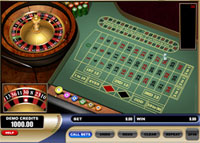American Roulette - Rules and Strategy Guide
Introduction to Roulette
Roulette is one of the most iconic casino games, known for its elegance and excitement. The game originated in Europe, with two main versions: European Roulette, featuring a single "0," and American Roulette, which includes both a single "0" and a double "00." While the European version offers slightly better odds for players, American Roulette remains popular in casinos across the United States.
The History of Roulette
European Roulette was developed in 1842 by Frenchmen François and Louis Blanc, who aimed to create a more player-friendly game. However, gambling was illegal in France at the time, so the game made its debut in Hamburg, Germany, where it gained popularity. Eventually, François Blanc brought the game back to Monte Carlo, where it became synonymous with high-end gambling in the famous Monte Carlo Casino.
Roulette made its way to America in the early 19th century, where casino operators added the "00" to the wheel. This adjustment gave the house a greater advantage, thus creating American Roulette. Despite the increased house edge, American Roulette remains a staple in many U.S. casinos and online platforms.

American Roulette Rules
American Roulette Rules
American Roulette is played on a wheel with 38 numbered pockets: the numbers 1 to 36, a single "0," and a double "00." The additional "00" differentiates it from European Roulette, which only has a single "0." This extra number increases the house edge, making American Roulette slightly less favorable for players.
The basic rules of American Roulette are simple:
- Players place their bets by placing chips on the roulette table layout, which corresponds to the numbers and various betting options.
- Once bets are placed, the dealer spins the wheel and releases a small white ball in the opposite direction of the wheel’s spin.
- Bets can be placed until the dealer announces "No more bets." After that, players must wait for the ball to land in one of the numbered pockets.
- The dealer then marks the winning number, and bets are settled accordingly.
Types of Bets and Their Payouts
One of the key attractions of roulette is the wide variety of bets that can be made. Here’s a breakdown of the main betting options in American Roulette:
- Single Number (Straight Up): Betting on a single number (e.g., 17, 5, or 00). Payout: 35 to 1.
- Split Bet: Betting on two adjacent numbers by placing a chip on the line between them (e.g., 13 and 14). Payout: 17 to 1.
- Street Bet (Three Numbers): Betting on a row of three numbers (e.g., 16, 17, 18). Payout: 11 to 1.
- Corner Bet (Four Numbers): Betting on a square of four numbers by placing a chip where the four numbers intersect (e.g., 11, 12, 14, 15). Payout: 8 to 1.
- Six Line Bet (Six Numbers): Betting on two adjacent rows, for a total of six numbers (e.g., 31, 32, 33, 34, 35, 36). Payout: 5 to 1.
- Dozen Bet: Betting on one of the three sets of twelve numbers (1-12, 13-24, or 25-36). Payout: 2 to 1.
- Column Bet: Betting on one of the three vertical columns of numbers (e.g., 1, 4, 7, 10...). Payout: 2 to 1.
- Low or High Bet: Betting on whether the winning number will be in the low (1-18) or high (19-36) range. Payout: 1 to 1.
- Odd or Even Bet: Betting on whether the number will be odd or even. Payout: 1 to 1.
- Red or Black Bet: Betting on the color of the number. Payout: 1 to 1.
House Edge in American Roulette
The house edge in American Roulette is notably higher than in its European counterpart due to the additional "00." In American Roulette, the house edge is approximately 5.26%, compared to 2.70% in European Roulette. This makes American Roulette a less favorable option for players looking for better odds.
American Roulette Strategies
While roulette is primarily a game of chance, some strategies can help players maximize their potential winnings or manage their bankroll effectively. Here are a few common strategies:
1. The Martingale System
This is one of the most well-known betting systems. In the Martingale system, players double their bet after each loss, aiming to recover previous losses and make a small profit. The idea is that eventually, a win will occur, and all previous losses will be covered. However, this strategy requires a large bankroll and can be risky if you hit a long losing streak.
2. The Reverse Martingale (Paroli) System
This system is the opposite of the Martingale. Instead of doubling your bet after a loss, you double it after a win, allowing you to capitalize on winning streaks while minimizing losses. The Reverse Martingale is generally considered less risky than the standard Martingale.
3. The D’Alembert System
In this strategy, players increase their bet by one unit after each loss and decrease it by one unit after each win. The D’Alembert system is less aggressive than the Martingale and is designed to provide a more balanced approach to betting.
4. Fibonacci System
This strategy is based on the famous Fibonacci sequence, where each number is the sum of the two preceding ones (e.g., 1, 1, 2, 3, 5, 8...). Players increase their bets following the sequence after a loss and move two steps back after a win. The Fibonacci system is often seen as more conservative than the Martingale.
5. Bankroll Management
Regardless of the betting system you choose, proper bankroll management is essential. Set a budget before you start playing and stick to it. Roulette can be unpredictable, and it’s important not to chase losses or bet more than you can afford.










